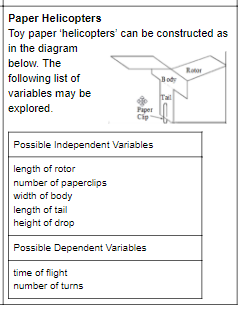What a great project. Thanks for sharing! I did something similar based on this Bingo card idea: https://t.co/KsPIdV4M3y
— Andrea McPhee (JarvisCI) (@ms_mcphee) December 21, 2020
I had been planning to adapt it for last year's summative project anyway, but it was perfect for lockdown science once I tweaked it a bit to make it work for our situation: all assessments were optional, and because we are a full-year school (as opposed to semestered), we were only allowed to give a total of 1.5 hours of work a week per course.
They had to choose a row or column, or one of the two diagonals (for the physics only) and create a video/slide-show/portfolio/study guide/something showing how well they understood the topics in that row, column, or diagonal. The more connections they made to things they had learned, the better! (For example, if the topic was Normal Force, I wanted them to talk about how it related to other "topics" such as the force of gravity, the force of friction, Newton's laws of motion, kinetics, etc.) They could hand in different topics at different times, and each topic could use a different medium.
- no more than 2 items in each row/column may use material that is not their own work
- if they are using someone else’s video, they may not also use the audio
- each video must have material from each of the 4/5 units
- for the pale green box(es), they include a topic of their own choosing from the missing unit; subject to my approval. They were given lists of suggested topics.
- the blue squares are a free topic: they may choose any other topic as long as it is something that was covered in class; subject to my approval
- at least three topics must include discussion of how they would find a mathematical prediction; all topics must discuss conceptual understanding
- there must be at least one practical demo
- Experimental design: they pick a topic from a list, which includes possible independent and dependent variables. They design an experiment to test the effects of changing one variable on another. They don’t need to perform the lab, but they will write it up as if they had, and set up a data table and graph for the results.
I started from TigerPhysics's grid and just made changes to reflect our curriculum. I took out the projects because the time restriction meant building/making anything was probably unrealistic, even if they could do it without leaving their homes. The green option boxes came about as I figured out which unit was missing from that row/column/diagonal. Of course, I've since realized that this is just a Sudoku board and could have saved myself some grief, but I kind of liked that it gave additional choice within a constraint.

Grade 9 science only has 4 units, but we wanted them to do a lab design since it was something we had been focussing on all year. Although they didn't have to do the lab, we picked experiments they could do at home if they had the equipment: paper helicopters, soap suds, bouncing balls, etc., with suggested independent and dependent variables. (These are experiments we ask them to design during the in-school lab exam, so fortunately that wasn't any extra work.)


There's some doubled and missing units in a few lines, again because I just started from Kevin's grid. For future use I've rejigged the unit distribution for 4/5/6 units and 4 units + lab design/build (which is just 5 units with some colour formatting) (so "unit" can be any grouping of content you wish, or a build/lab design/drawing/whatever you need). Each includes a free-choice box. If you want to make your own or need a different-sized board, dCode.xyz is the Sudoku-maker I used. Type 'Sudoku' into the search bar and choose your size. Click "Fill" and type single letters or digits in to represent the topic group (no spaces to get them lined up across the top of the board). Remember to tick the "Mode Sudoku X" box if you want the diagonals, choose one of the nifty shapes if you want to give the students even more choice, and click "Solve Sudoku". (Également, il est disponible en francais.)
I loved this project. I got some amazing things out of the students -- granted, they were the students who were still participating in the great online experiment of Spring 2020, but I'm definitely going to be doing it in the future. I particularly want to incorporate Mike Mohammed of @Mo_Physics's idea of using Bingo choice boards for student end-of-unit review; that way they have a base of video footage they can either revise or reuse at the end of the year. I also liked that in a course with different sections, where different teachers may have focussed on different topics to different degrees (no matter what we plan), each teacher could swap out a topic or two and still maintain the integrity of the assessment across classes.
(Newton is making a repeat appearance from the student's Newton's law video. And you bet I make them cite where they get their meme graphics from!)
Future thoughts: adding a build requirement to the project (or choice of build/lab design for physics), decreasing the amount of "other people's work" the senior grades are allowed to include, including 1-1 conferencing check-ins, working out how to do something similar for math courses, optional working with a partner on certain segments...
Summative Choice Board planner
Grade 11 physics (SPH3U) remote learning summative assessment


